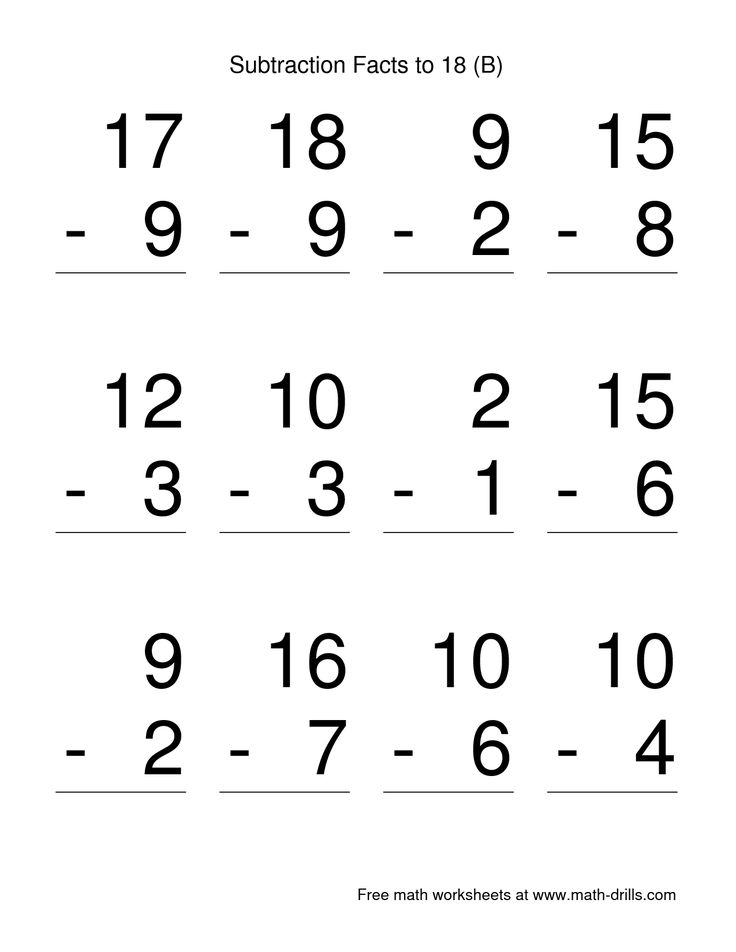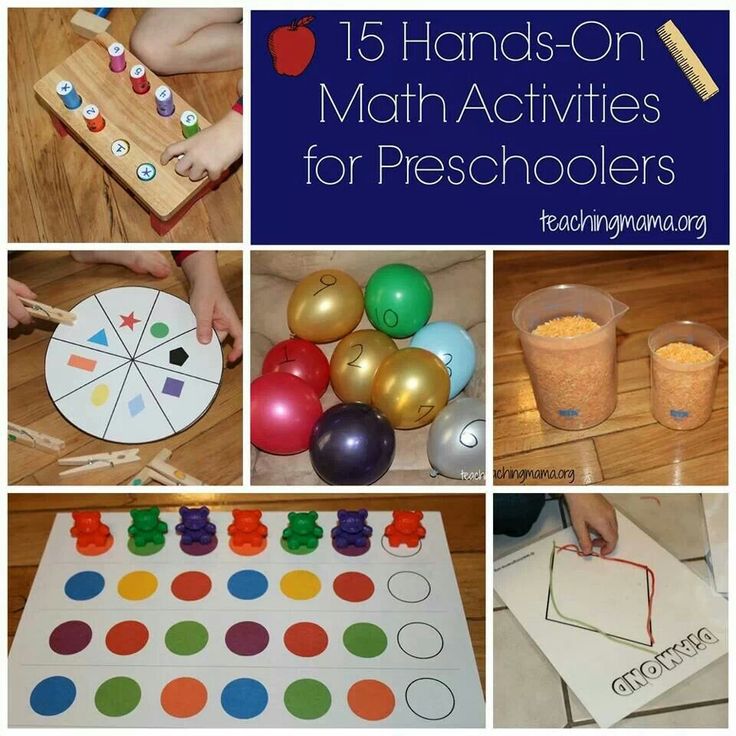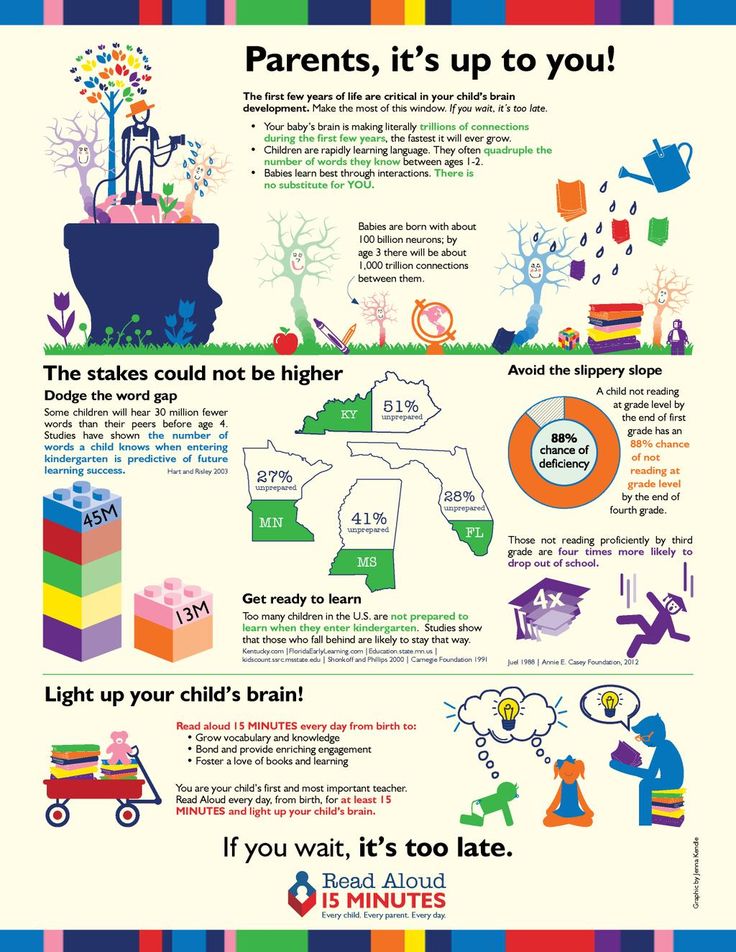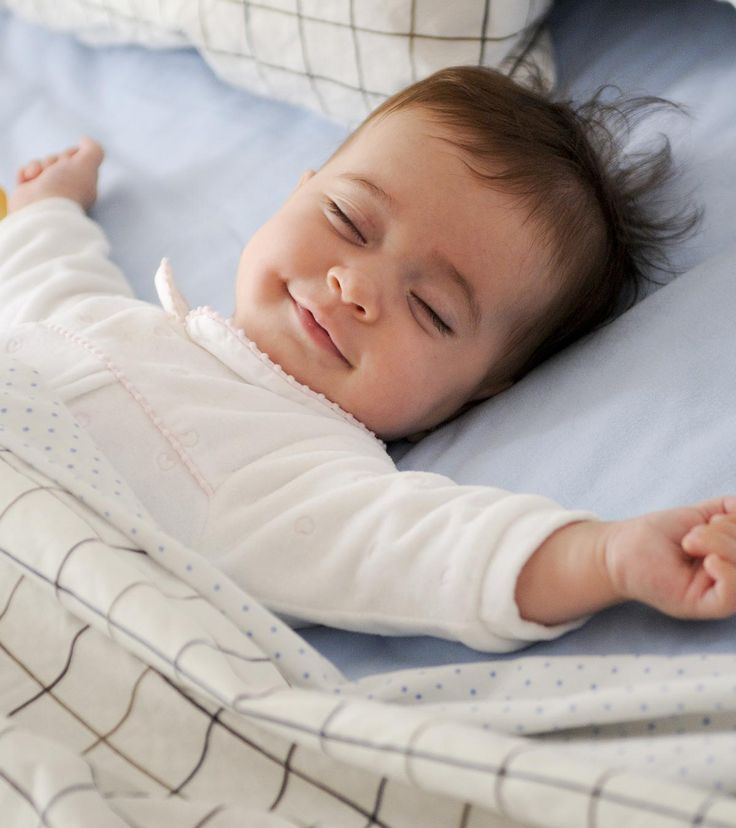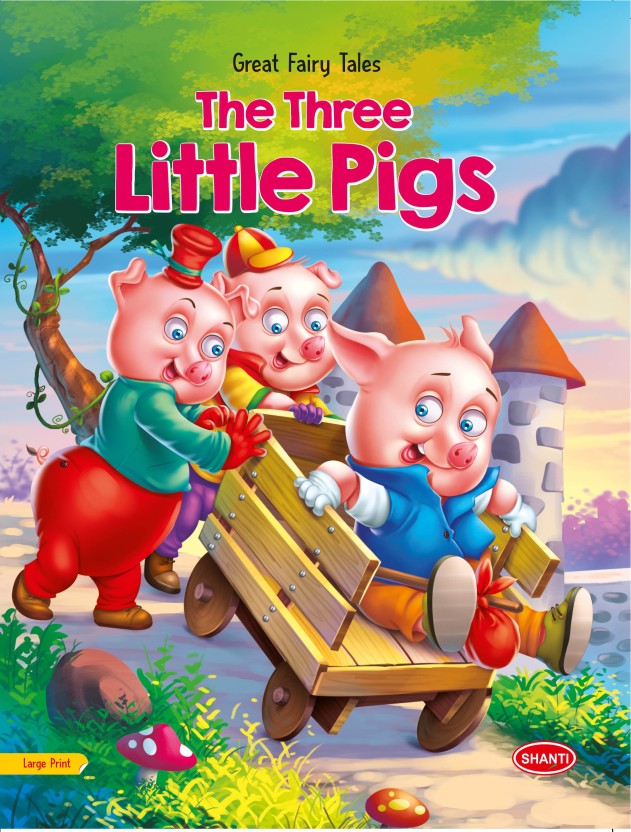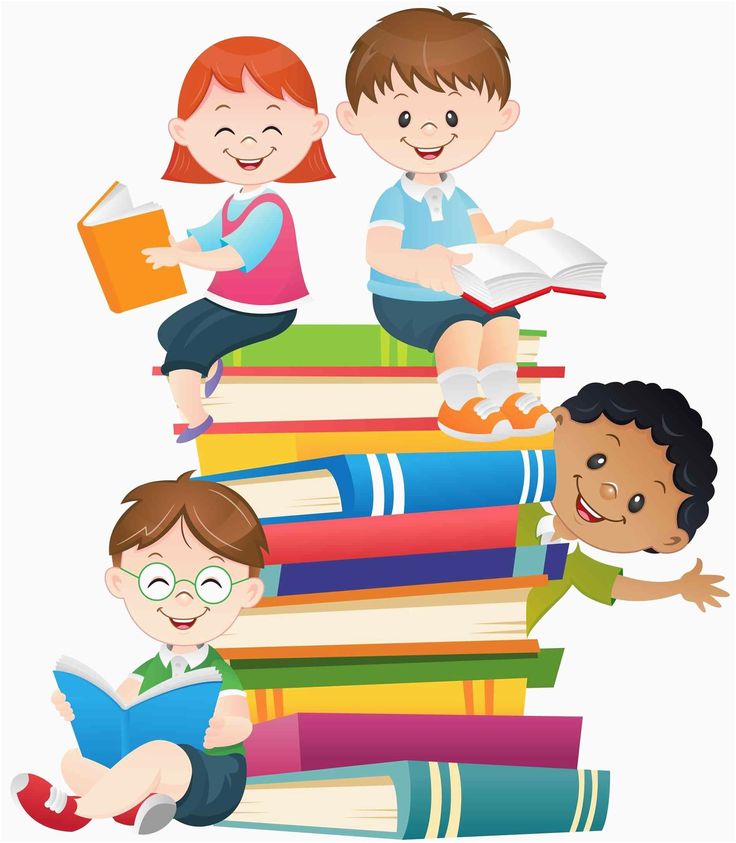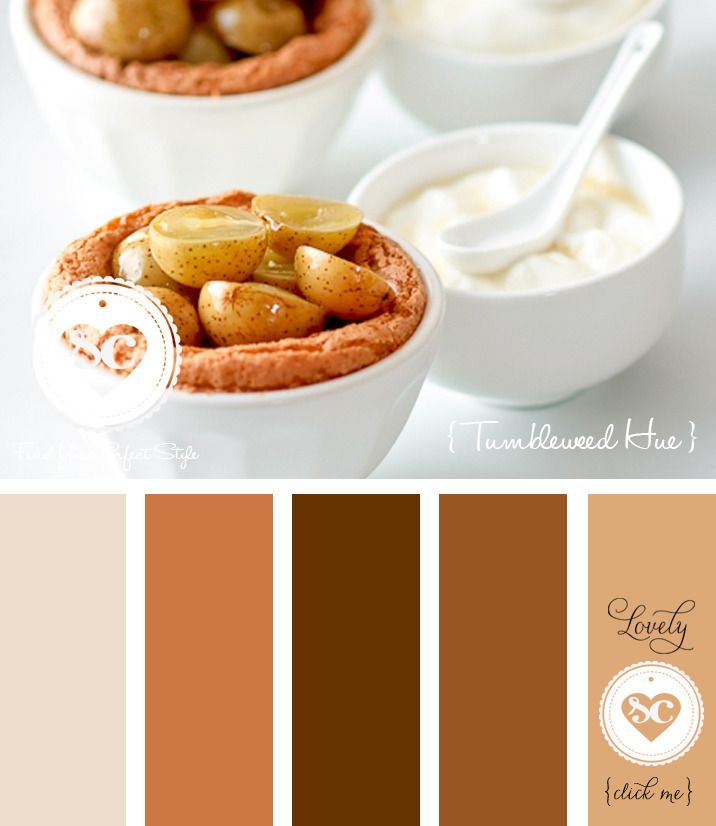Math first graders
The Most Important Math Concepts Kids Learn In 1st Grade
Your child has progressed from kindergarten to first grade. That’s exciting news! There is so much learning to come their way, especially from their first grade math class.
Math skills and concepts build on each other from grade to grade, which is why children need to get a firm foundation so they can handle the more complex challenges as they progress in school.
As a concerned parent, you might be wondering what some of these mathematical concepts will be and, more importantly, how you can help your child master them. You don’t have to figure it out on your own.
Here, we will give you a breakdown of what to expect from your child’s math class. We’ll also add a few tips on how to help your young learner thrive through it all.
Let’s get started!
Why Is Math Important?
Math is taught in the classroom, but that doesn’t mean that’s the only place it’s relevant. We use it every day!
From the hexagonal bee combs to the circles, semi-circles, and crescents of the phases of our moon, mathematics is an essential part of the world we live in, and learning it helps us make sense of everything around us.
Did you know that math skills can also be linked to music? Children who play musical instruments use the same part of the brain when doing math. This is why studies have shown that music students do better in mathematics than their non-musical peers.
Sports and mathematics also have an interesting connection. Just think about all the coordination involved in performing well in certain sports. Research has shown that these skills can also be used to learn math.
In addition, mathematics helps us be stronger logical thinkers. Since most young kids tend to enjoy math time, it’s essential to foster this natural love for the subject just as much as we want to encourage children’s love for reading.
Helping children develop a love for mathematics generally works well when approached actively as a problem-solving skill rather than a rote memory task. Math helps children thrive in various aspects of their lives.
So, how do we get there? It all starts with the foundation.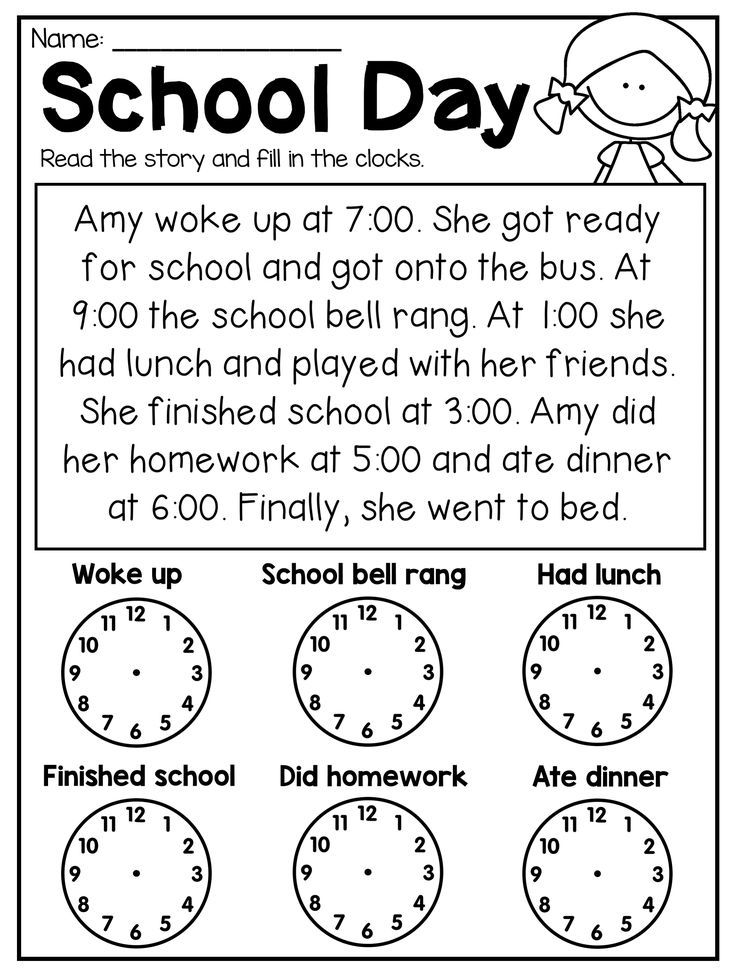
Below are the key first grade math concepts your child will soon learn and some tips on how you can support them on their journey.
8 Important First Grade Math Concepts
1) Numbers And Counting
At first grade level (and for the next few years in school), learning different numbers and counting will form a significant part of your child’s mathematics lessons.
By the end of the first grade, your child will have learned to:
- Count and write numbers from 1 to 100
- Count by 1s, 2s, 5s, and 10s
- Count backward
- Count onward from any number
- Count backward from any number
There are different ways to help your child grasp numbers and counting at home, and hands-on activities work best.
An effective strategy is to help your child visualize what all these numbers mean. For example, instead of just memorizing the numbers, they can count bears, large dried beans, or even craft sticks.
2) Addition And Subtraction
In first grade math, your young learner will start adding and subtracting numbers up to 30.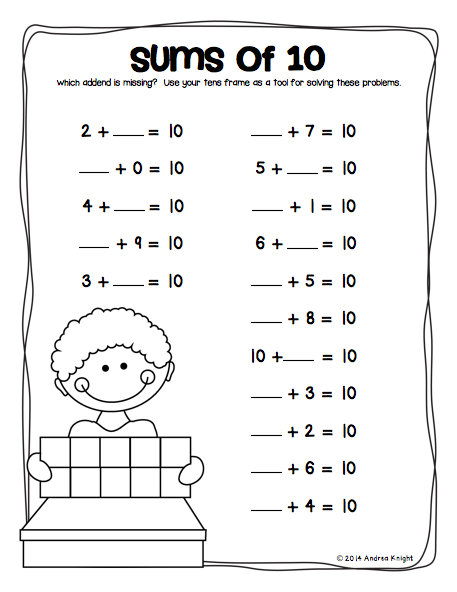 They will also solve basic word problems with the help of drawings, objects, and equations.
They will also solve basic word problems with the help of drawings, objects, and equations.
By the end of the first grade, your child will have been shown how to:
- Add three one-digit numbers
- Write and show an understanding of the mathematical symbols (+, -, =)
- Solve problems involving one and two-digit numbers
- Solve problems involving an unknown. For example, 1 + _ = 4
Addition and subtraction are two math skills that can be demonstrated in everyday life situations. This makes it relatively easy to practice at home!
For instance, you might ask, “If you have two teddy bears and granny buys you three more, how many teddy bears will you have in total?” Or, “There were six strawberries in the fridge. Daddy ate some strawberries. There are now four left. How many did daddy eat?”
3) 2-D Shapes
During pre-k, children get introduced to different shapes. In first grade, they will continue to extend their understanding of them.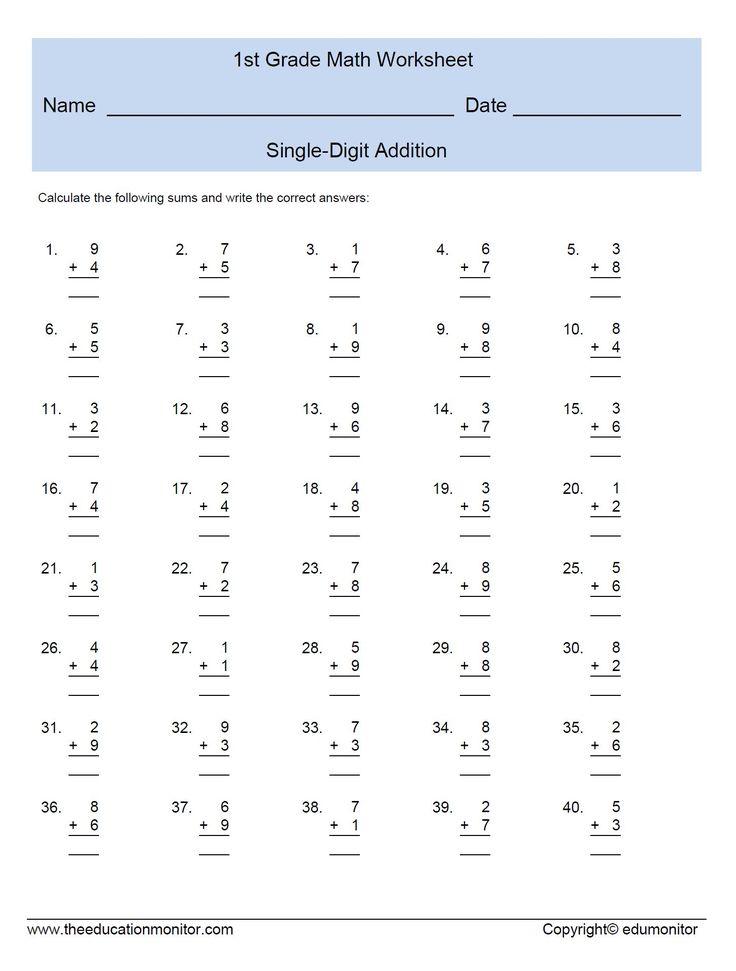
By the end of the first grade, your child may be able to:
- Examine the attributes of different shapes (number of sides, faces, etc.)
- Name the 2-D shapes
To help your child grasp these shapes at home, continue to point out and name the 2-D shapes in the world around you (circles, triangles, pentagons, etc.).
When doing so, remember to always highlight the attributes (e.g., this book has four equal sides, so it’s a square).
4) Sorting And Patterns
Understanding and sorting patterns also forms a part of first grade math.
Your first grader will learn to:
- Sort different objects by attributes such as color, shape, and function. For example, sorting a mixed group of blocks so that the red, blue, green, and yellow blocks are separated.
- In addition, if these blocks are placed in a pattern (e.g., green, yellow, green, yellow, etc.), your child should be able to both predict which color will come next and create their own identical pattern.
 This skill will help develop your child’s logical thinking.
This skill will help develop your child’s logical thinking.
Continue to allow your young learner to play with fun building blocks and create their own patterns to help them master this skill.
5) Fractions
Montessori material. Children’s hands. The study of mathematics School and kindergarten. Whole and part. FractionsAs a first-grader, your child will be introduced to fractions as equal shares and basic fractions such as ½, ⅓, and ¼. For children to fully grasp these concepts, it’s essential to keep things intuitive.
For example, you can start by helping them understand that a half is two equal parts, a third is three equal parts, and so forth. They also need to understand that although three is bigger than two, ⅓ is smaller than ½.
Fractions can be tricky for kids to learn, which is why it’s important to use practical and everyday items.
For example, you can help your young learner examine the fractions of a full pizza. Then, as you divide the pizza into different slices, talk about the parts that you’ve created from the whole.
The concept of equal shares can also be demonstrated from one object and a group. For instance, you can have ½ of a single item (e.g., ½ of a cookie), or you can have ½ of a group of objects (e.g., ½ of four cookies is two cookies).
6) Number Place Values
With all the counting in first grade math, your child will naturally be introduced to the concept of place values. For instance, understanding that in the number 288, the 2 is worth 2 “hundreds” (or 200).
There are various activities you can do at home to help your young learner with this concept, including:
- Using number lines
- Base ten blocks
For more ideas to help with number place values and other 1st grade math concepts, take a look at the book Games for Math: Playful Ways to Help Your Child Learn Math, From Kindergarten to Third Grade by HOMER’s very own Peggy Kaye.
7) Time
Telling time (both digital and analog) is an important life skill that kids learn from first grade.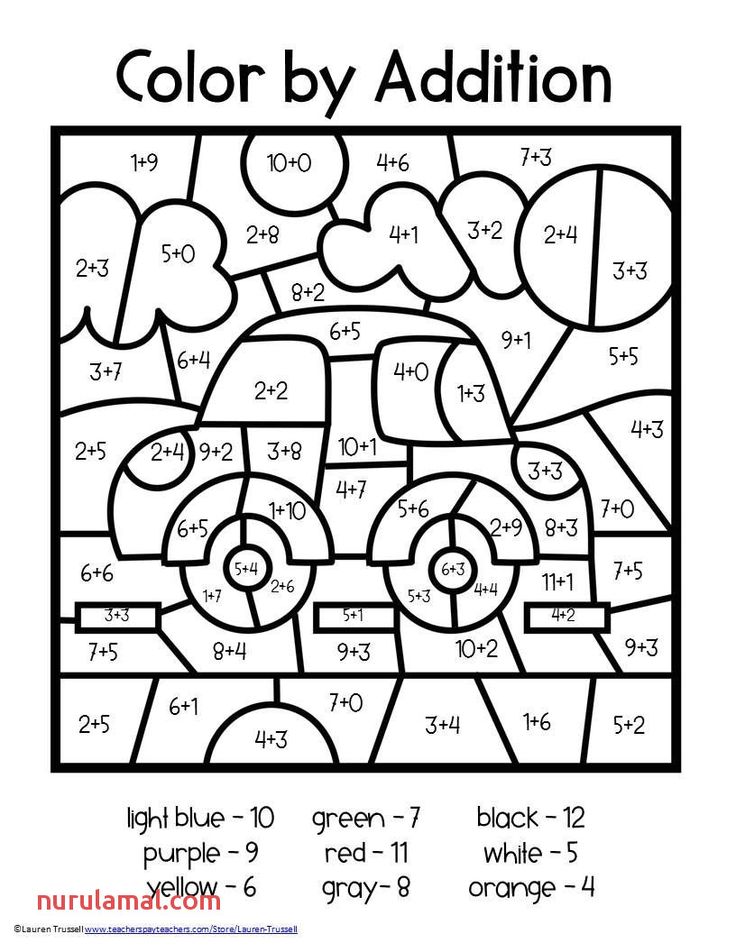 The concept of elapsed time will also be introduced at this stage.
The concept of elapsed time will also be introduced at this stage.
In first grade math, your child will learn to:
- Tell time to the nearest hour, half-hour, and quarter-hour (sometimes even to five minutes)
- Make the connection between time and events (e.g., shorter, longer, after, before)
Understanding the analog clock can be tricky for a child who’s only exposed to digital clocks. So help your young learner by buying one (or making one for learning) to hang up at home.
You can then speak to your child about what it means when the hands move. To make things easier, start by helping them tell time to an hour and half-hour before progressing to quarter-hours.
8) Measurements And Comparisons
First grade math also involves some measuring and unit comparisons.
Your child will learn how to measure using a ruler and, after taking measurements, compare and order objects by length. First-graders will also learn how to compare the weights and volumes of different objects.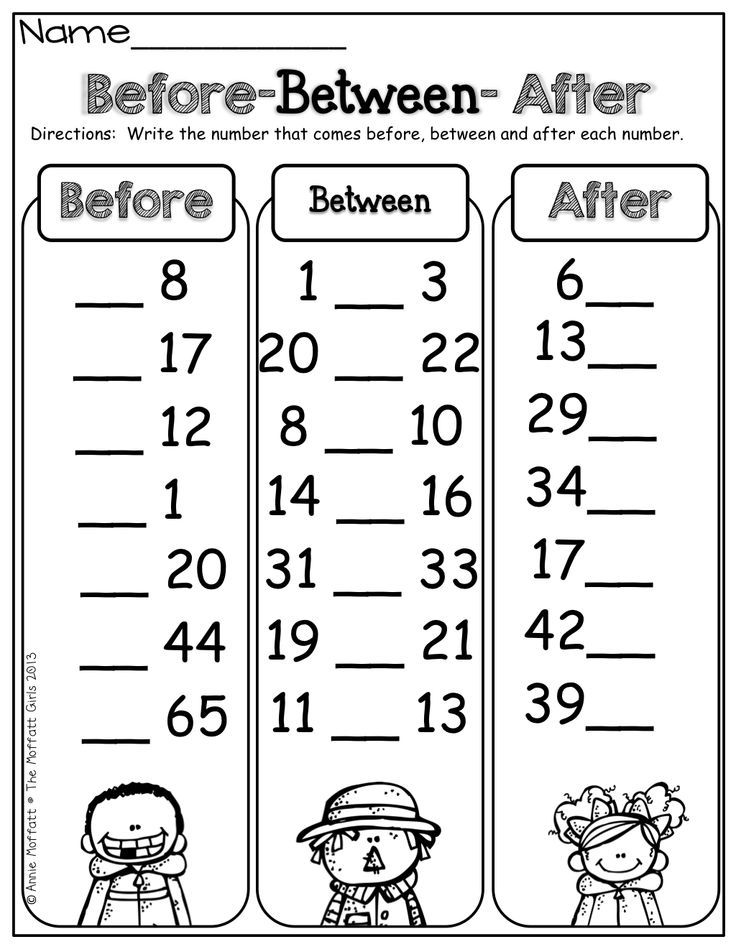
To help your young learner at home, keep rulers nearby and take measurements together of some of the objects they love (e.g., stuffed toys, cookies, etc.).
Bonus tip: If you’re a regular baker, why not help them see how you use measuring tools to create their favorite treats? Yum!
Helping Your Child With First Grade Math
We’ve already mentioned a few ways in which you can help your first grader with math at home. In addition to the above, playing math games is a fun and easy way to practice math at home!
Here are some examples of more math activities your young learner will enjoy at home:
- Fill in a number grid puzzle
- Build objects with legos and measure
- Number Hunt, Hopscotch, Is It A Number, and Find A Number
Math Is All Around Us
Helping your child grasp first grade math concepts at home is easier when you focus on the fact that mathematics is a part of our everyday lives. It is in the shape of road signs, the parts of sliced pizza, and even the watches on our wrists!
Sometimes kids (and parents) forget that math can be lots of fun.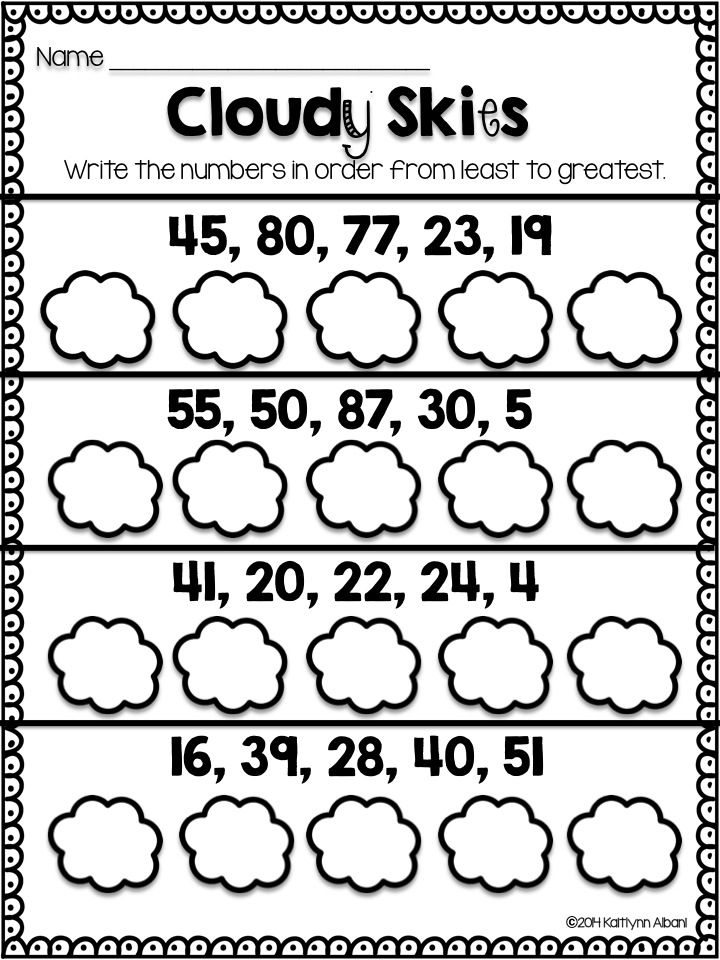 So whenever you can, incorporate games and activities to bring a little excitement to all the learning.
So whenever you can, incorporate games and activities to bring a little excitement to all the learning.
Will this help your child become our next best mathematician? Only time will tell. But one thing is for sure — all of the great mathematicians started somewhere. Even Isaac Newton had to master first grade math!
For more ideas and inspiration, visit the HOMER Learn & Grow app.
Author
1st Grade Math Skills, What Your Child Will Learn, Komodo Math
- Math Tips
- Education
- 1st
Your child is heading to first grade! After the year in kindergarten, your first grader will be ready for some amazing growth. For many children, first grade is the year that they bloom as readers and mathematicians. Get ready to support your child’s mathematical growth by learning about first grade math skills.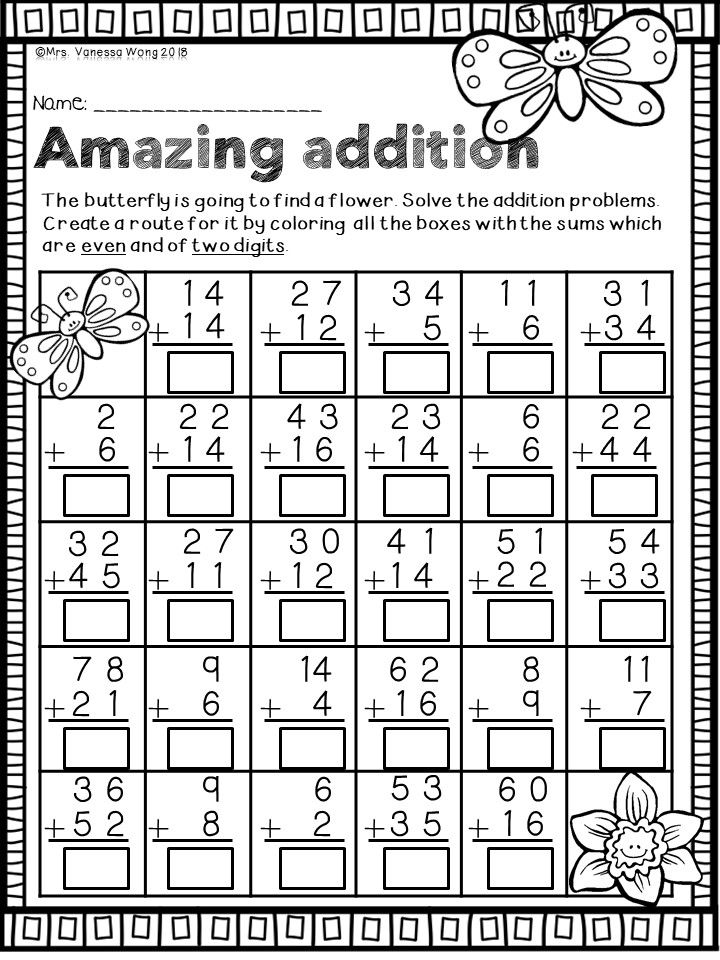
In first grade, you can expect your child to learn about:
1. Addition and subtraction facts to 20
Now that your child has mastered the idea of adding and subtracting, they’re ready to practice math facts. This means getting faster when answering addition and subtraction problems to 20.
Help your child develop fluency by asking basic addition and subtraction problems - we find that using treats can help keep kids interested! If your first grader needs support, encourage the use of physical objects or fingers as problem-solving tools.
2. Addition and subtraction as inverse operations
Your child probably understands the concept of addition as “putting together” and subtraction as “taking apart.” In first grade, children are encouraged to see the connections between addition and subtraction. Your child will learn how addition and subtraction are inverse operations, or that one is the opposite of the other, and create “fact families” of related addition and subtraction problems.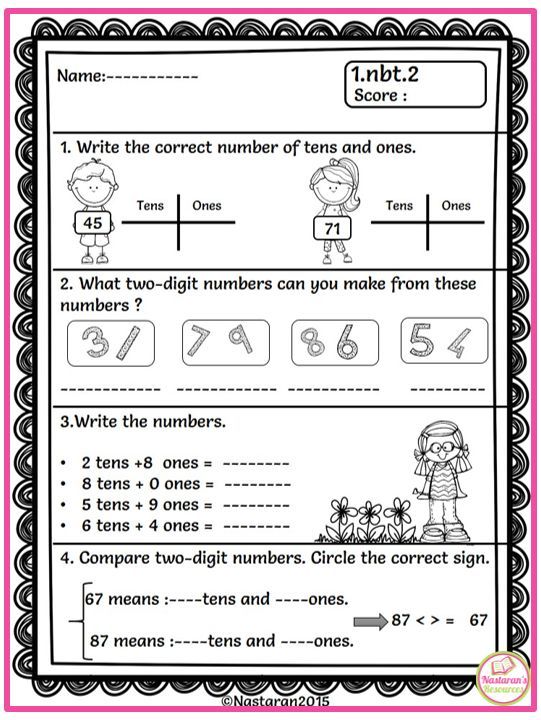
When working with addition and subtraction, ask your child to see connections. For example, if your child has four dolls and three cars, ask how many toys there are in all. Then ask how many toys there would be if the four dolls are taken away.
3. Count and write within 120
Your child has probably mastered counting to 20. But in first grade kids will learn to count all the way up to 120! That’s not all. Kids will be expected to not only count, but write, the numbers. This is great practice for understanding multi-digit numbers.
At home: Encourage your child to write numbers whenever possible. Talk about how two-digit numbers are made up of tens and ones and how three-digit numbers are made up of hundreds, tens, and ones. Just looking closely at multi-digit numbers together can be a great learning opportunity.
4. Add within 100
Now that your child has an understanding of numbers past 100 as well as basic addition and subtraction facts, it’s time to practice adding within 100.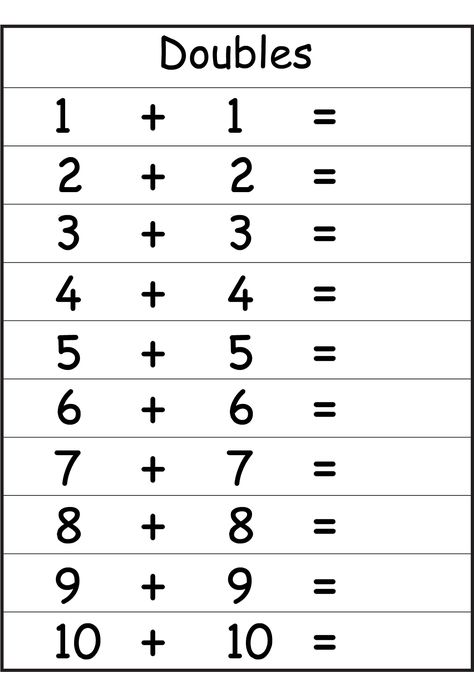 Children will practice adding one-digit numbers to two-digit numbers using strategies like counting on and number charts. Children can practice adding larger numbers with the help of a 1-100 chart.
Children will practice adding one-digit numbers to two-digit numbers using strategies like counting on and number charts. Children can practice adding larger numbers with the help of a 1-100 chart.
First graders are also ready to practice adding and subtracting 10s to and from two digit numbers.
At home: Help your child see patterns when adding and subtracting 10s. For example, after solving a problem like 59 - 10 = 49, point out to your child that 49 has one less 10 than 59. This is another great way to learn about place value.
5. Measure objects
In first grade, kids learn how to measure using rulers and more unusual things like paper clips. After taking measurements, children compare and order objects by length.
At home: Kids love measuring things around the house, so keep a couple of rulers handy. Pay attention to how your child is using a ruler and taking measurements. Sometimes kids don’t quite measure from end to end, so they might need a bit of help...
Pay attention to how your child is using a ruler and taking measurements. Sometimes kids don’t quite measure from end to end, so they might need a bit of help...
6. Tell time to hour and half hour
One of the trickiest concepts first graders will learn is to tell time. Using analog clocks is confusing, especially when kids are more used to seeing digital clocks. In first grade, your child will learn about the big and little hands of a clock and will practice telling time to the hour and half hour.
At home: Get hold of an analog clock for your home (either a real one or one made just for learning). Talk with your child about the time and how the hands move around the clock. Remember to just focus on telling time to the hour and half hour to start!
7. Understand basic fractions
First graders also get an introduction to fractions as equal shares. They will learn how to divide into equal groups and learn basic fractions like ½, ⅓, and ¼.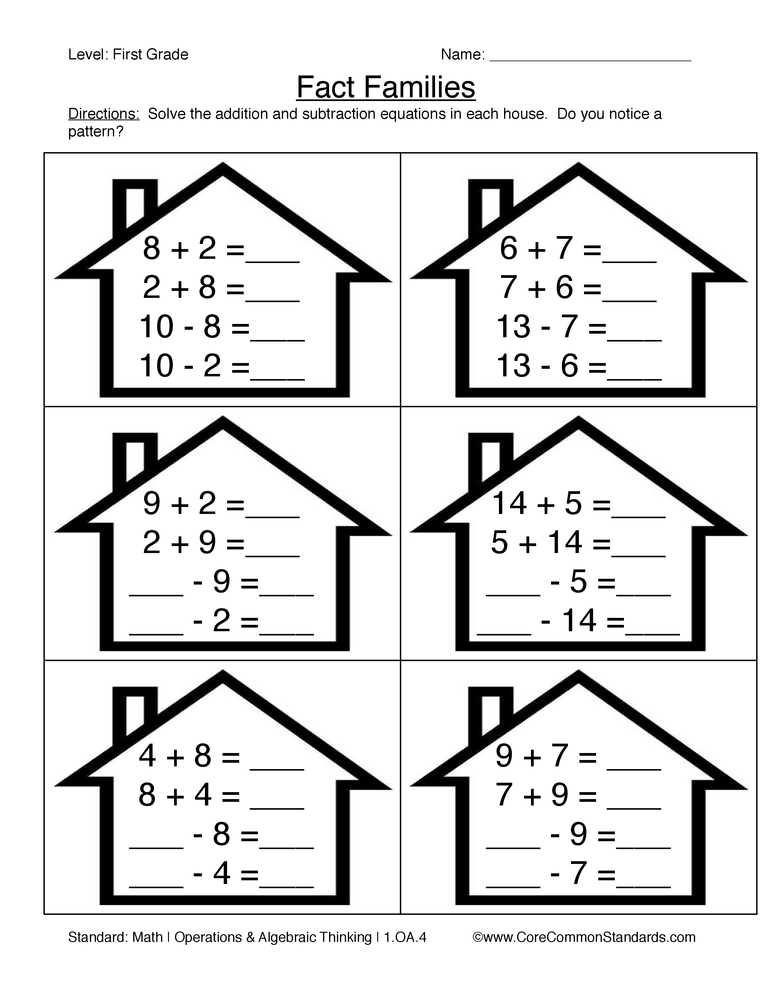 First graders usually have a good understanding of fairness, so practicing making equal shares should be a relatively easy task for them!
First graders usually have a good understanding of fairness, so practicing making equal shares should be a relatively easy task for them!
At home: Help your child to divide pizzas, pies, and sandwiches into equal shares. As you do, talk about the fractions of the whole that you created.
First graders are ready to dive deep into mathematical concepts. Find time to connect with your child about classroom learning and get ready to have some fun!
Found this useful? Check out our grade by grade math guides from Kindergarten to 5th grade
Written by Lily Jones, Lily loves all things learning. She has been a kindergarten & first grade teacher, instructional coach, curriculum developer, and teacher trainer. She loves to look at the world with curiosity and inspire people of all ages to love learning. She lives in California with her husband, two kids, and a little dog.
About Komodo – Komodo is a fun and effective way to boost K-5 math skills. Designed for 5 to 11-year-olds to use in the home, Komodo uses a little and often approach to learning math (15 minutes, three to five times per week) that fits into the busy family routine. Komodo helps users develop fluency and confidence in math – without keeping them at the screen for long.
Designed for 5 to 11-year-olds to use in the home, Komodo uses a little and often approach to learning math (15 minutes, three to five times per week) that fits into the busy family routine. Komodo helps users develop fluency and confidence in math – without keeping them at the screen for long.
Find out more about Komodo and how it helps thousands of children each year do better at maths – you can even try Komodo for free.
Back to School - 5 Tips to Help you Ease Back into the Routine
Here are some steps you can take to ease children back from full vacation mode so that the first week of school doesn't knock you sideways.
Mindset - The Path to Mastery
People who have a growth mindset believe that they always have the potential to learn and improve. They are more motivated to persevere with difficult tasks, to take risks and to learn from failure.
entertaining tasks and examples in pictures with answers and solutions
Entertaining mathematics
1st grade
Why do kids love LogicLike tasks more than tasks from math textbooks? The professor and his team will teach each child to click both typical and non-standard math problems.
Select the child's age
to get started!
Preschooler
First grader
LogicLike.com children learn to reason, develop logic, ability to mathematics and cognitive interest. nine0003
Recommended thematic courses
online for grade 1
Logic course and thinking To begin
Preparing for Olympics To begin nine0003
Why do children and parents choose LogicLike?
What kind of mathematics do children in the 1st grade need?
The following story often happens: when preparing for the 1st grade the child liked to solve entertaining tasks, puzzles, examples and tasks.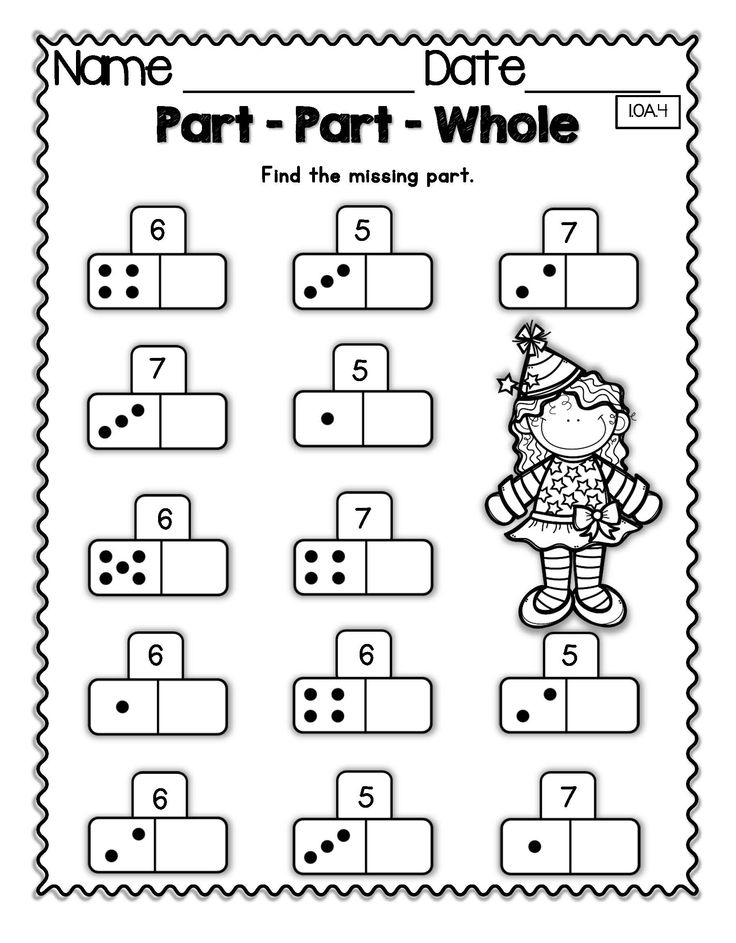 Passes the first a quarter and a capable child begins to get bored of the monotonous or too simple for him assignments. nine0003
Passes the first a quarter and a capable child begins to get bored of the monotonous or too simple for him assignments. nine0003
If you were looking for a mental counting simulator or want to check how much your child has learned school curriculum, you will love the collection of math tests for grade 1 from LogicLike.
The LogicLike team knows how to captivate a first grader mathematics and charge with the desire to learn how to solve any problems. We have more 3500 entertaining tasks, awards, achievements, student rating, personalized certificates. nine0003
Try the full fun math course and logics from LogicLike
- Flexible mind and confidence! When children decide tasks and puzzles on LogicLike, they train the "wiggles" and develop ingenuity.
 nine0041 Foundation for IT! Algorithms, patterns, logic - we have all this. We teach to work with information, train memory and thinking - we form the potential for success in IT professions.
nine0041 Foundation for IT! Algorithms, patterns, logic - we have all this. We teach to work with information, train memory and thinking - we form the potential for success in IT professions. - We increase progress! nine0006 Regular classes of 20-30 minutes develop logical and mathematical capabilities. As a result - high grades at school, prizes at olympiads and competitions, interest in learning increases.
Start the course! nine0003
Entertaining mathematics for first graders online
Mathematics classes on LogicLike begin with entertaining logical problems, unusual examples, puzzles and other tasks in pictures that you want to solve. In the course we alternate mathematical and logical problems, patterns, figures in space and other types assignments. nine0003
In the course we alternate mathematical and logical problems, patterns, figures in space and other types assignments. nine0003
Popular categories of assignments for grade 1
Selections from the training course LogicLike
- Simple addition and subtraction
- Enlargement, reduction by several units
- Composite tasks
- Text logic and math
- Examples for addition and subtraction for class 1
- Math puzzles for 1st class
Addition and Subtraction Problems
Simple task to find sums
To decide click Start!
Three girls took 1 balloon in each hand.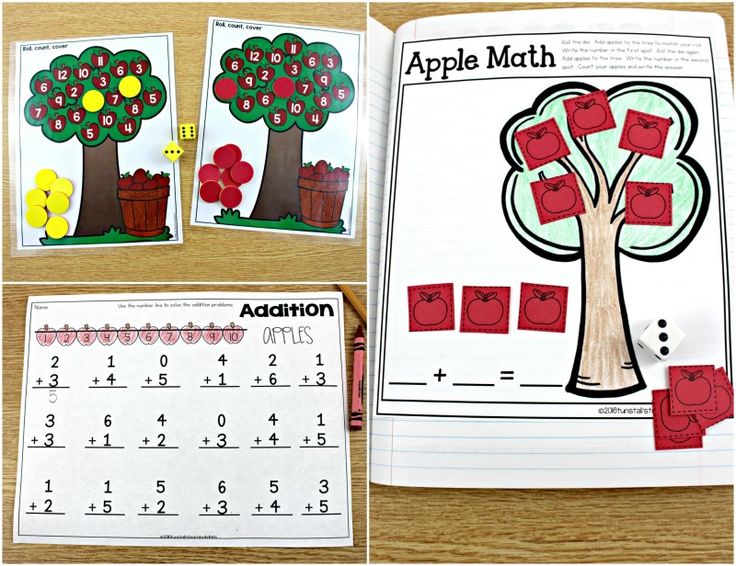
How many balls do they have?
Watch answer nine0003
Answer:
6.
Mindfulness task
To decide click Start!
There are two sweets, one cake and three pears on the plate. nine0003
How many fruits are on the plate?
Watch answer
Answer: nine0003
3.
Subtraction problem
To decide click Start!
There were 7 liters of water in a 12-liter barrel, and 8 liters in a bucket.
Water from a bucket filled the barrel to the top.
How many liters of water are left in the bucket?
Find out the answer
Answer:
3.
nine0030 We have everything you were looking for
Text and logical tasks
Tasks mathematics nine0003
Examples and tasks
Shapes in space: 2D and 3D
Start classes!
nine0002 We have built the educational process in an understandable and exciting way for anyone child format, from simple to complex.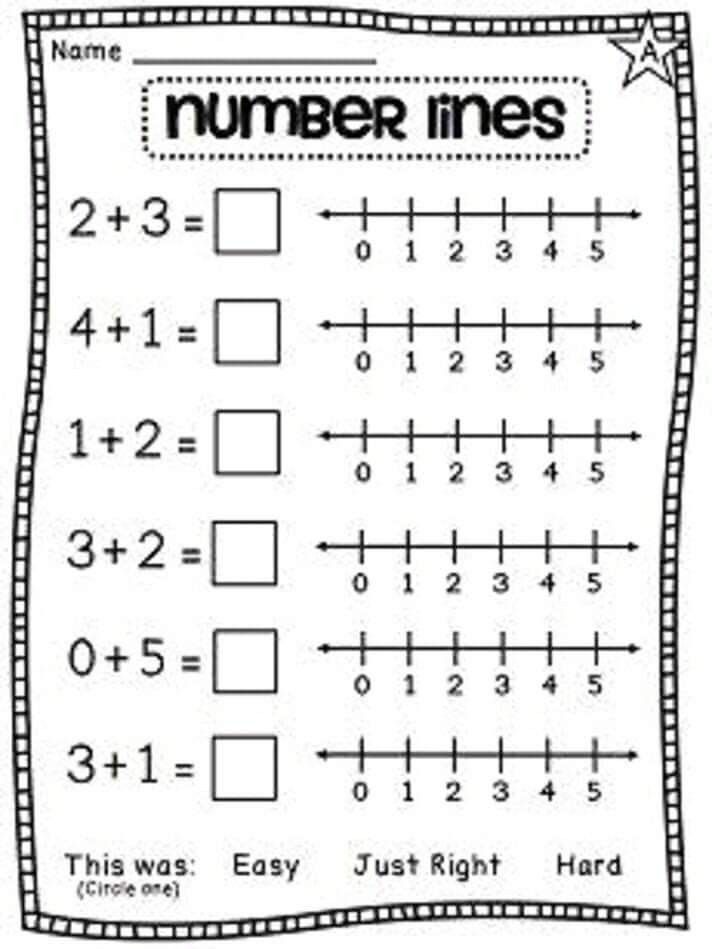
Tasks to increase and decrease the number by several units
What will be the result?
To decide click Start! nine0003
Find out the answer
Answer:
5 apples.
Age problem
Yura was born 2 years earlier than Vanya. nine0087 Yuri is now 5 years old.
How old is Vanya?
Find out the answer
Answer: nine0003
3.
Finding the Unknown term and difference
To decide click Start!
An evil virus hid the numbers in the examples.
Put the correct numbers back in their places. nine0003
Find out the answer
Answer:
2 + 3=5
3 − 2 = 1
You can see examples of Olympiad tasks for 1 class or start to activities on the site.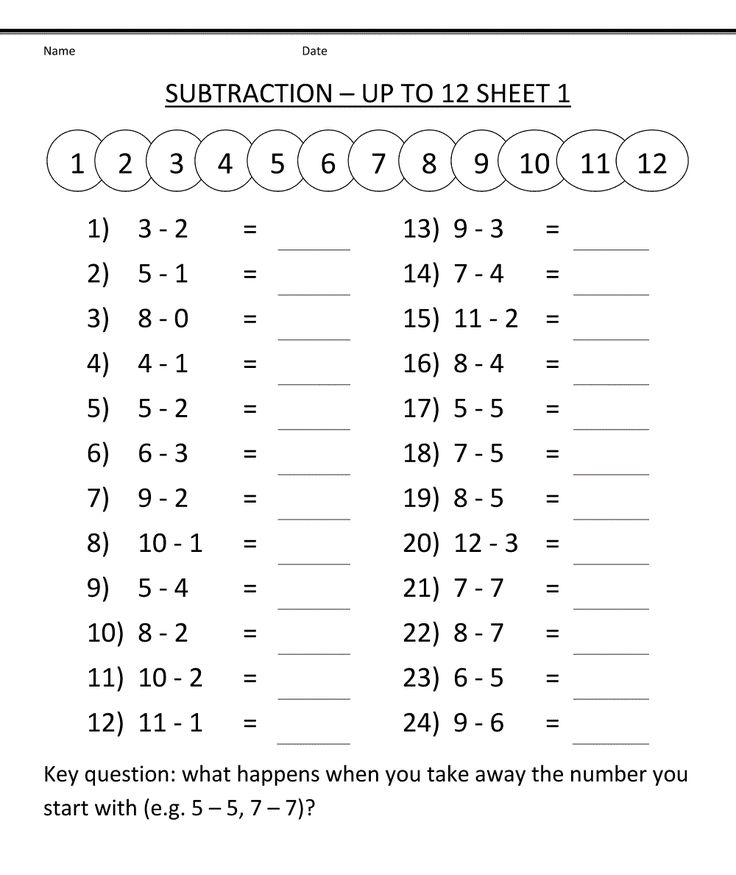 nine0003
nine0003
Day after day more 100,000 children
go through 10-20 tasks on the LogicLike website. And how much can you?
Solve problems
Downloads: tasks for developing counting skills
For those who do not currently have the opportunity to study online, we have prepared small selections assignments for paperwork. You can download and print tasks for practicing oral skills invoices in pdf format. nine0003
To "warm up" the child's interest in mathematics, we recommend starting with 1 sheet a day.
- Entertaining tasks for grade 1 for addition and subtraction within 10.
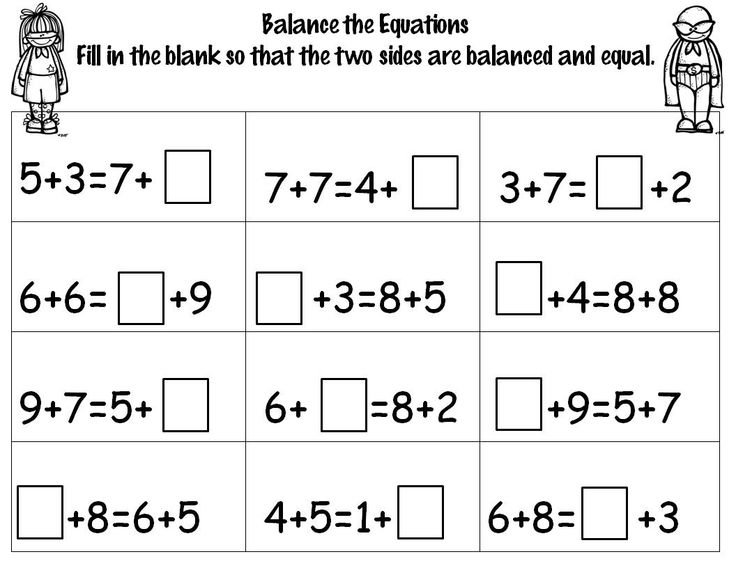
- Entertaining tasks for first graders: addition and subtraction up to 10.
What is the best online course? nine0031
We recommend that future and present first graders practice 15-20 minutes a day.
Compound tasks for first graders
Tasks in two or three actions develop memory, logic and mathematical speech.
Composite difference problem comparison
To decide click Start!
Condition: The purple monster ate 4 whole oranges, and the red monster ate 7 halves of the same oranges.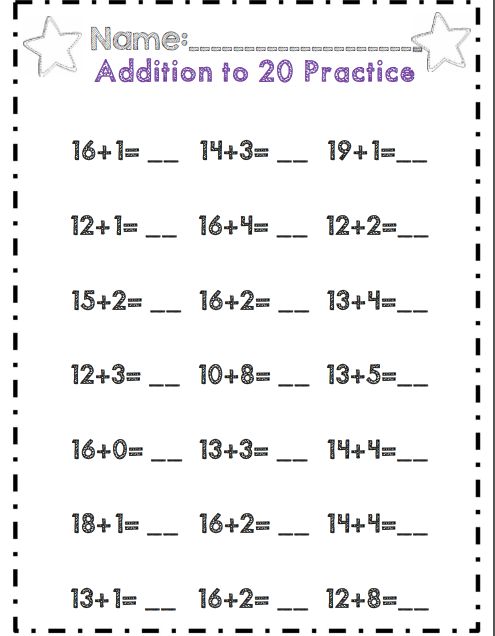
Question: Who ate more oranges? nine0003
Show decision
Answer:
Violet.
Solution
1 whole orange = 2 halves.
4 whole oranges = 2 + 2 + 2 + 2 = 8 halves.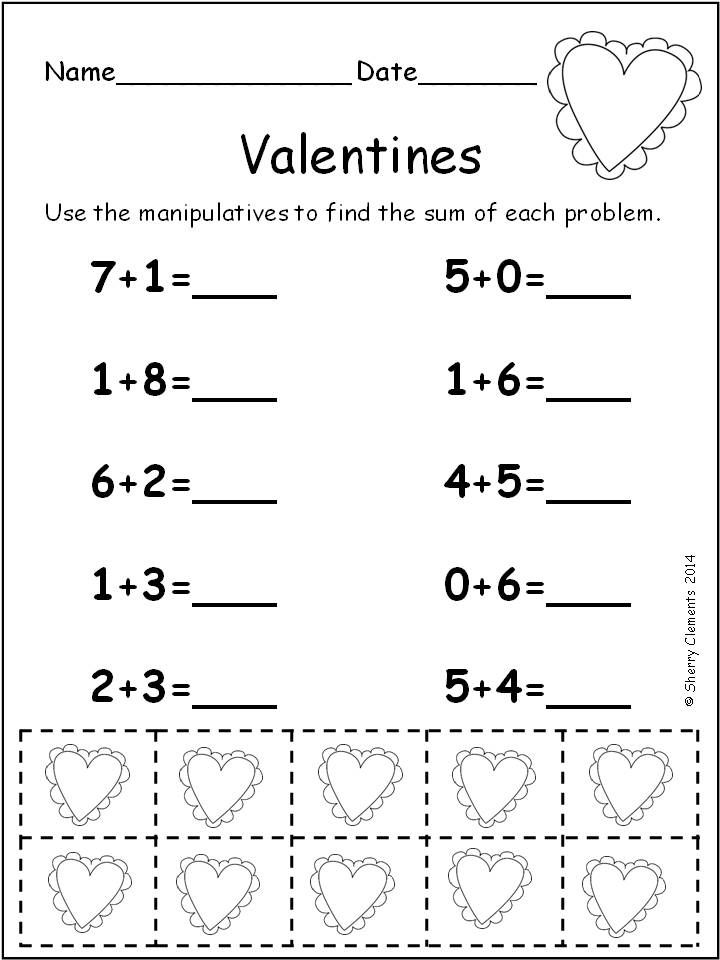
8 > 7 means Purple ate more than Red. nine0003
Multi-action task on balancing
To decide click Start!
Condition: A rabbit is 2 kg lighter than a puppy.
Questions: What the scale will be higher if the puppy is placed on the left side of the scale, and the rabbit on right? How after that you need to place the weights on the scales so that they come to equilibrium? nine0003
Find out the answer and decision
Solution
1.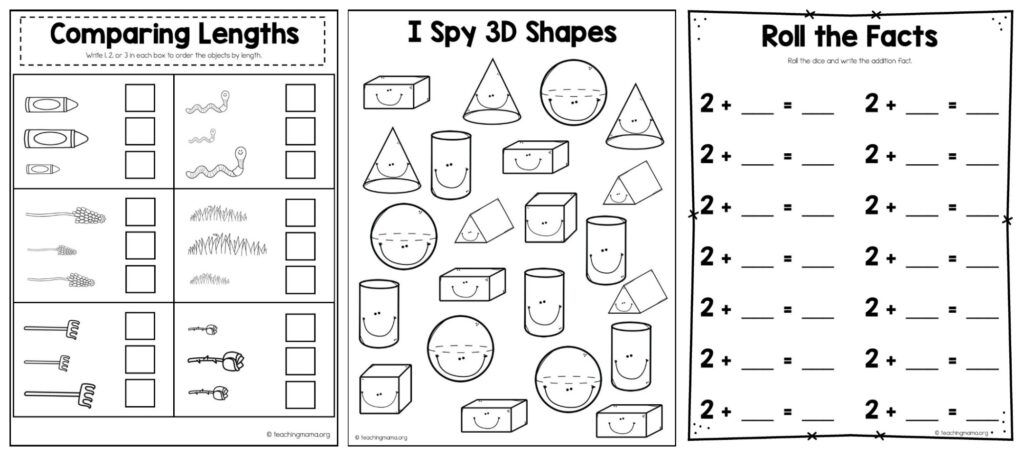 A rabbit is lighter than a puppy, so the right one is lighter. the bowl with the rabbit will rise up. nine0003
A rabbit is lighter than a puppy, so the right one is lighter. the bowl with the rabbit will rise up. nine0003
2. In order for the balance to balance, the weight on the bowl rabbit should be 2 kg heavier than the kettlebell that we will add to the puppy.
It turns out that you need to put on a bowl with a puppy weight in 1 kg, and on a bowl with a rabbit - in 3 kg. nine0003
Suggested tasks are part of the LogicLike educational platform. Start learning!
Develop logic and mathematical thinking
- Child-friendly theory .
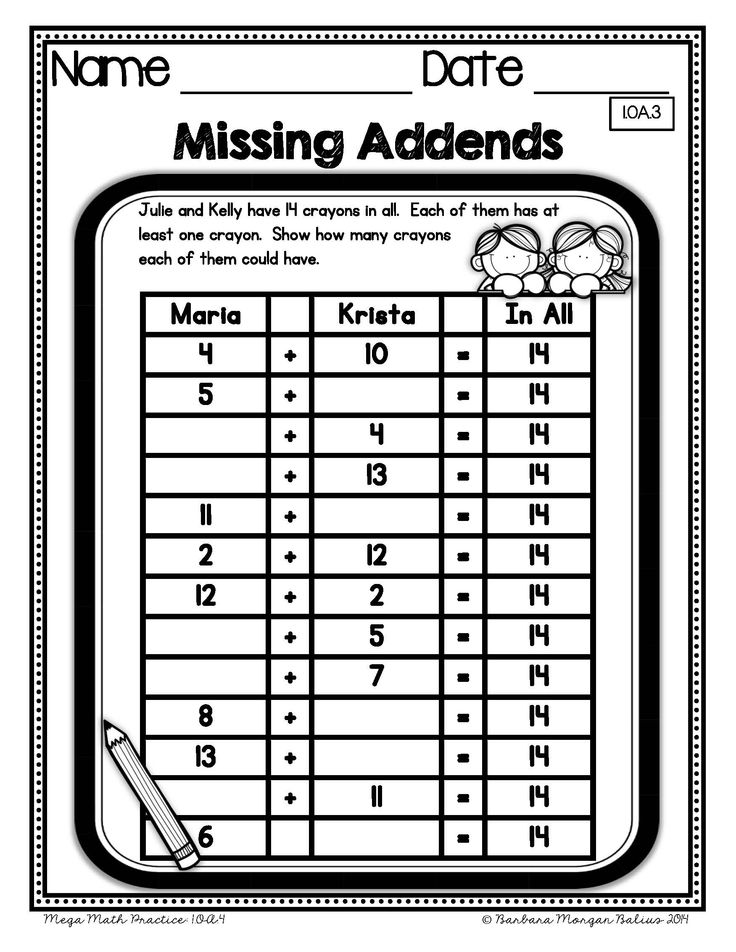 Video tutorials, tips and hints will help the student to independently deal with even very complex tasks.
Video tutorials, tips and hints will help the student to independently deal with even very complex tasks. - Making math fun . game form and step-by-step methodology make the learning process interesting and effective.
- All materials on one site . 17 categories, over 3500 exciting challenges! The LogicLike team creates new ones every week interesting tasks that help children understand and love logic and mathematics.
Text Boolean nine0031
Fedya has equal number of sisters and brothers.
Who is more in the family: sons or daughters?
Show answer nine0003
Answer:
more sons (Fedya is also a son).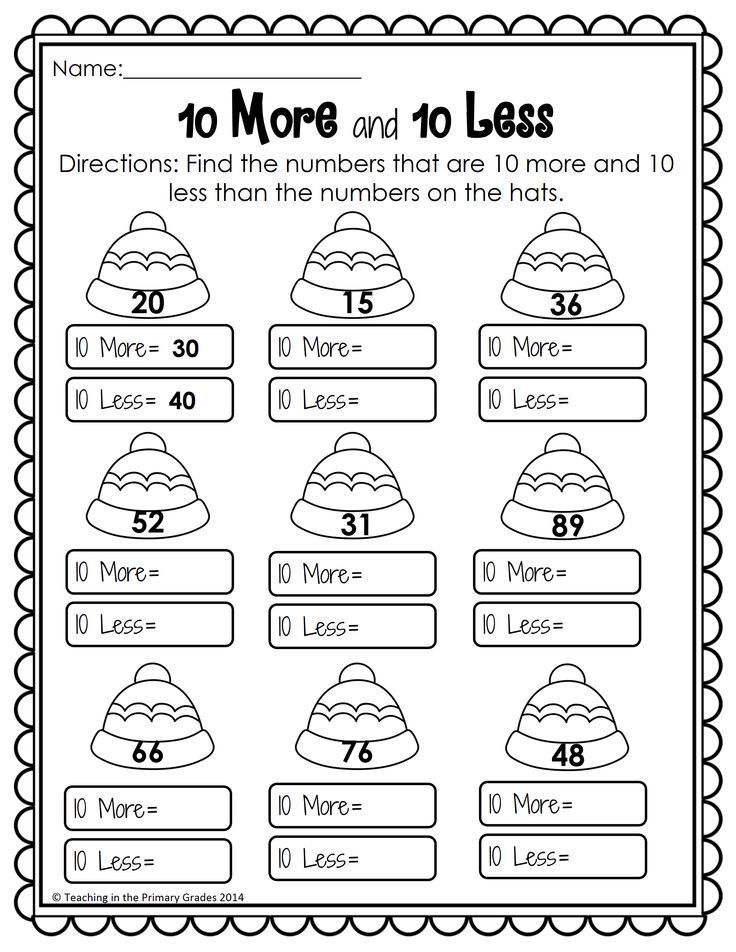
To decide click Start!
Kolya and Nadia have the same items.
Anya has a jump rope. nine0003
Distribute items to all children.
Find out the answer
Answer:
Kolya and Nadi - balls. Ira and Anya have jump ropes. nine0003
Want more examples of similar tasks? See logic puzzles for 1 class.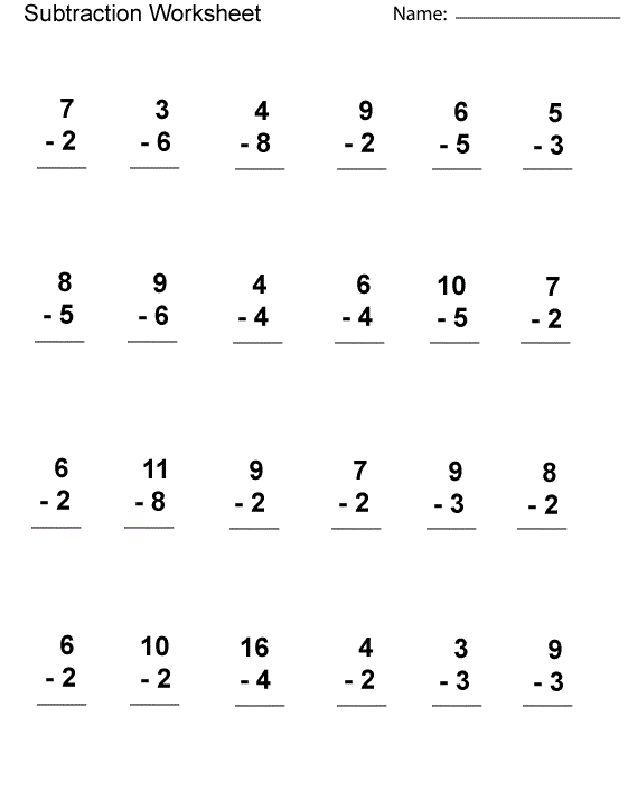
Take the full course from LogicLike!
- 3 steps to start the path to the heights of logic 😎:
- 1. Solve 5 problems nine0041 2. Save account
- 3. Show the platform to the child and solve together 10-15 tasks.
Math tasks for logic
Task with figures on verbal-logical thinking
To decide click Start! nine0003
Condition: The professor thought of a figure and gave two clues:
- it is not square and not blue;
- it is round or triangular.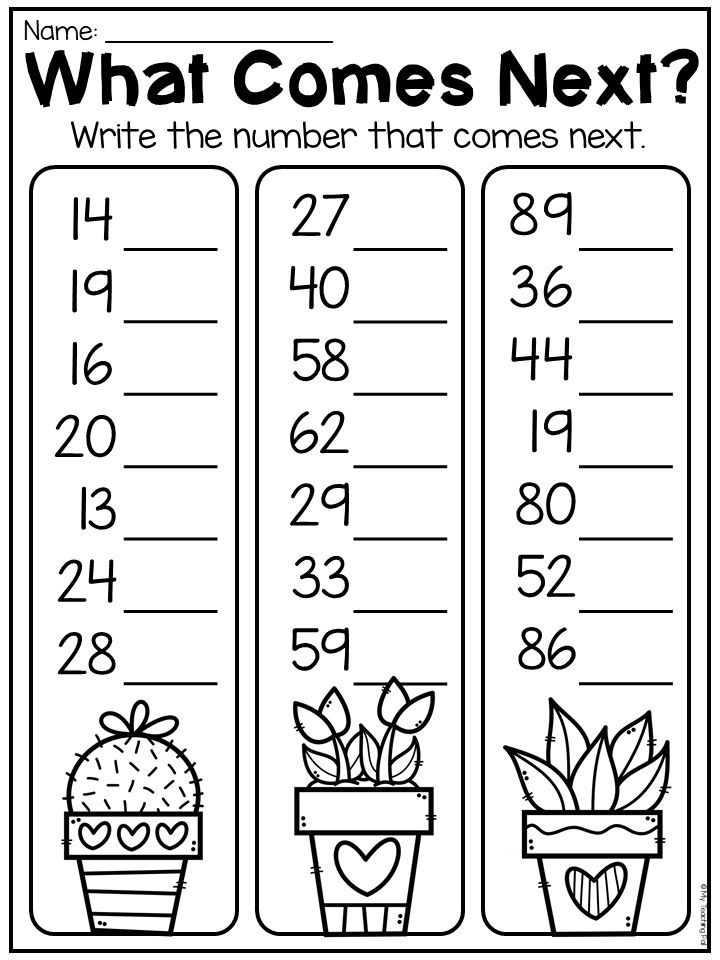
Question: What did the Professor guess? nine0003
Find out the answer
Answer:
orange triangle.
Take hint nine0003
Prompt
Solving similar mathematical puzzles promotes the development of verbal-logical thinking , trains possession skills basic methods of thinking: highlighting essential and insignificant features of objects, generalization, comparison, derivation of the investigation and others.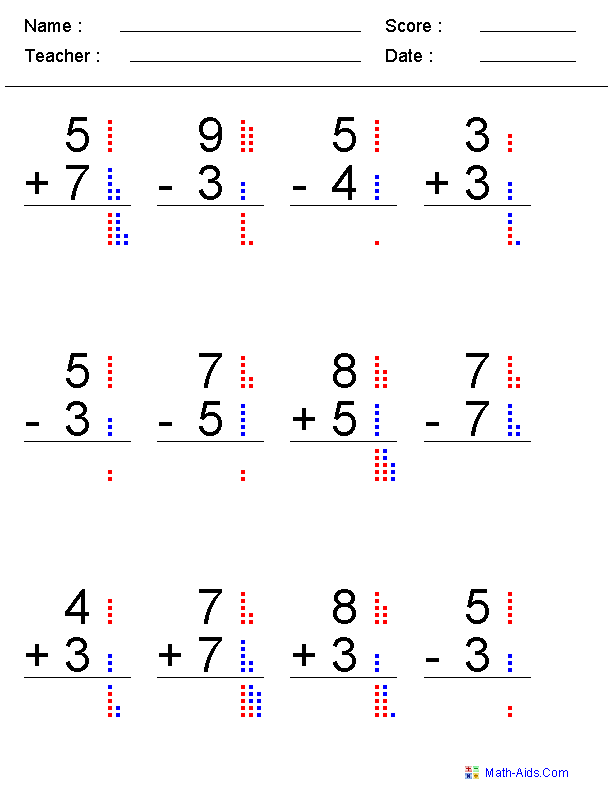 nine0003
nine0003
Continue the pattern
To decide click Start!
Find a pattern and continue the series with numbers.
Find out the answer nine0003
Answer:
20.
Comment:
The difference between each successive number and the previous one increases by 1 (+1, +2, +3…).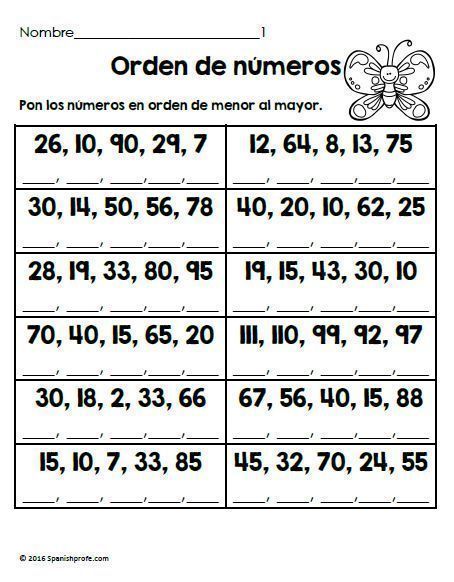 nine0003
nine0003
You can see other rules for 1st grade or start training.
Did you like the material? Share with friends!
Connect to LogicLike!
More than 150,000 children from all over the world have already do math and logic at LogicLike.com. nine0003
Start learning! Start learning
We will teach a child
Reasoning and making decisions
Solve any logic problem
Think flexible and non-standard
Other collections of tasks by age nine0031
Tasks for preschoolers
Tasks for grade 2
Tasks for grade 3 nine0003
Tasks for grade 4
You are here: LogicLike Math and Logic Online Simulator in mathematics for grade 1
tasks for counting and logic
Actual
Contents- How to teach a child to count
- Tasks for adherence for first -graders
- Option 1
- Option 2
- Option 3
- Option 4
- Purpose Tasks for first -graders
- Option 1
- Option 2
- Option 4 9004
- Tasks for tasks comparison for first graders
- Logic tasks for first graders
- Instead of a conclusion
When sending a child to first grade, parents always dream that their child will study well and receive only the highest marks in all subjects.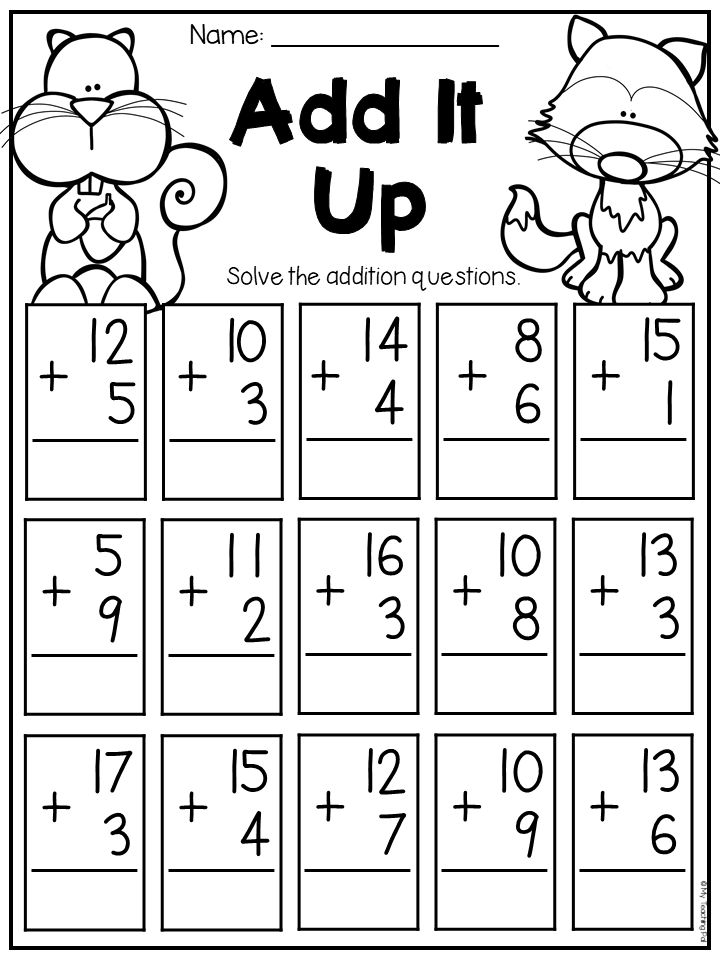 And if it is not at all difficult to teach a child to read, then it is not always easy for children to understand and solve mathematical problems. In order for a first-grader to succeed in mathematics at school, parents either hire a tutor, which is not always financially justified, or try to work with their children on their own. In this material, we will tell you how to pull up a first-grader in mathematics at home, talk about different types of problems and methods for solving them. nine0003
And if it is not at all difficult to teach a child to read, then it is not always easy for children to understand and solve mathematical problems. In order for a first-grader to succeed in mathematics at school, parents either hire a tutor, which is not always financially justified, or try to work with their children on their own. In this material, we will tell you how to pull up a first-grader in mathematics at home, talk about different types of problems and methods for solving them. nine0003
How to teach a child to count
Parents of first-graders should remember that at the age of 5-7 years, abstract thinking is still poorly developed in children. Remember the tale of Pinocchio, when he counted the apples that “Someone” allegedly took. Similarly, a 5–7-year-old child is not yet able to imagine the condition of the problem.
It is best to use visual aids that the child can see and touch. These can be counting sticks, cubes or pictures cut out of cardboard (for example, a set of cardboard hedgehogs, flowers, leaves, etc.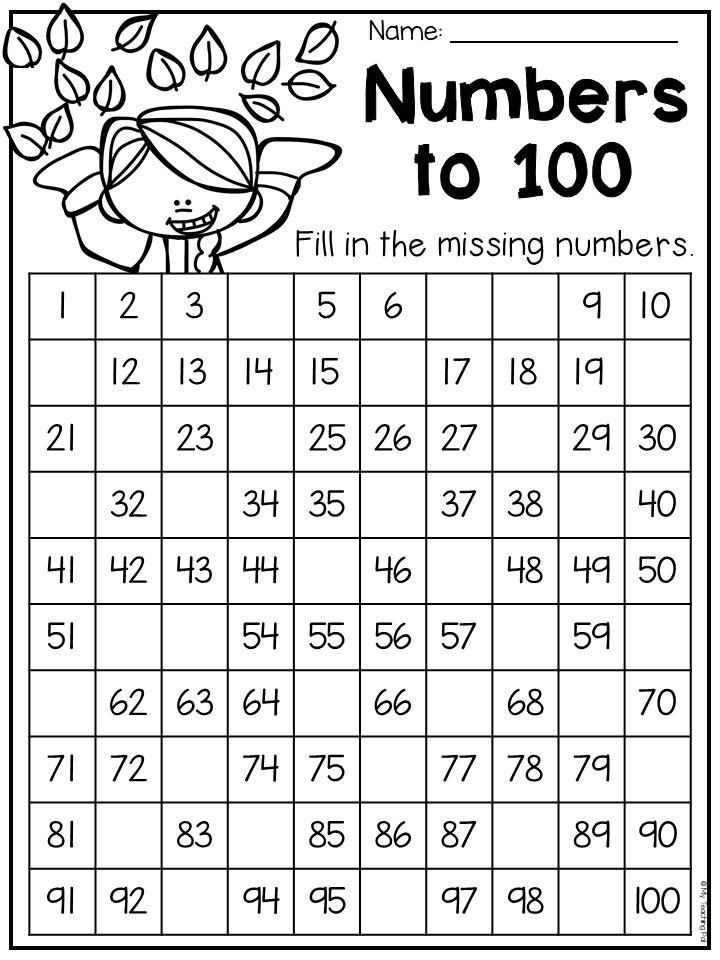 ). Lay out in front of the child the entire condition of the task from visual materials: there was so much, so much was added or taken away. So it will be easier for him to understand the condition of the problem and it will be easier to find its solution. nine0003
). Lay out in front of the child the entire condition of the task from visual materials: there was so much, so much was added or taken away. So it will be easier for him to understand the condition of the problem and it will be easier to find its solution. nine0003
Another important point in teaching children is that the child must learn to distinguish tasks from each other by type. To do this, you can target it to some keywords. For example, if the task mentions the words "added", "brought", "arrived", "ran" and others denoting joining, then this is an addition problem.
Understanding what type a particular problem belongs to, the child will learn to determine the required solution algorithm and successfully cope with the task. nine0003
Addition problems for first graders
As already mentioned, addition problems have a common feature - attachment. Another sign of addition tasks is the phrase “how much” in the task question.
The child must learn to clearly understand that if there is something added to the condition, then he needs to add up the available numbers.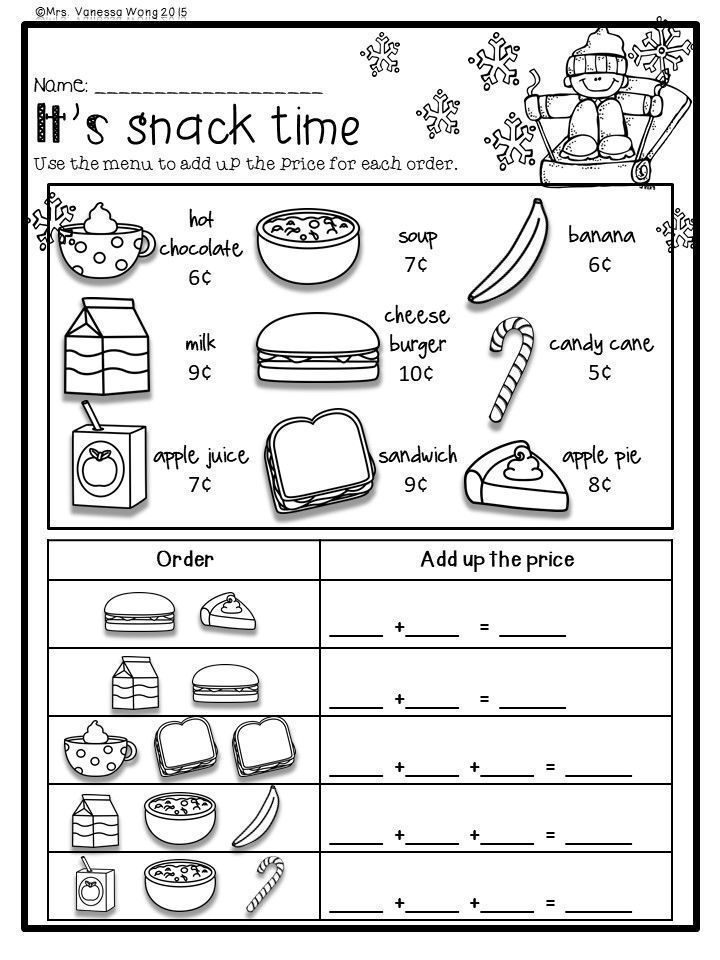 The child must understand what the first term, the second term and the sum are, and be able to find them in the task condition. nine0003
The child must understand what the first term, the second term and the sum are, and be able to find them in the task condition. nine0003
In order for a child to master mental counting well, he needs to regularly practice mental counting. If you are on vacation, at least once a day, ask him examples to develop memory. You can even study on the way to school or in the section.
Five to ten examples daily will not tire a first-grader too much, but will bring many benefits for his further studies.
Below are addition problems for first graders. For convenience, we have divided them into options, so that when studying at home, you can solve already completed tasks with your child. nine0003
Option 1
- Natasha read 5 books during the holidays, and Katya read 4 books. How many books did the children read together during the holidays?
- There were 6 apples on one branch of the apple tree, and 7 on the other. How many apples were there on both branches of the apple tree?
- There are potted flowers on the window in the classroom.
 The first window has 2 flowers, the second has 3 flowers, and the third has 1 flower. How many flowers are in the class?
The first window has 2 flowers, the second has 3 flowers, and the third has 1 flower. How many flowers are in the class? - Alyosha's family has 2 boys and 1 girl. Tanya's family has 1 girl and 1 boy. Serezha has 2 boys in the family, and Katya has only 1 girl. How many girls live in the families of all children? And how many boys? nine0044
- According to the results of assessments for the 1st quarter in the 1-A class, 10 excellent students, 14 good students and 2 three students. In the 1-B grade - 8 excellent students, 12 good students and 3 three students. And in 1-B - 11 excellent students, 11 good students and 4 three students. How many excellent students, good students and three students in the entire parallel of the first classes?
Option 2
- Natasha is 8 years old, how old will she be in 3 years? In 4 years, in 10 years?
- In the stationery store, Nastya liked the felt-tip pens for 18 rubles. She has 10 rubles, 5 rubles, 2 rubles and 1 ruble.
 Will the girl have enough money to buy? nine0044
Will the girl have enough money to buy? nine0044 - 6 girls and 12 boys went for a walk. How many children went out for a walk?
- Sasha has a pack of counting sticks. Of these, 10 are red, 8 are blue and 12 are yellow. How many sticks are in the pack?
- 4 girlfriends and 5 friends came to Polina's birthday party. How many children will sit at the festive table? (here it is important that the child does not forget to count Polina herself, the answer in the problem is 10 children).
Variant 3
- Children came to the park and saw birds swimming on the lake: 8 swans and 12 ducks. How many birds were swimming in the lake? nine0044
- Children were planting saplings at school. Petya planted 2 seedlings, Anton planted 3, Natasha and Katya planted 2 seedlings. How many seedlings did the children plant in total?
- There were sweets in a box on the table. Masha ate 5 candies, Alena - 3 candies, Nastya - 6 candies, and Kolya ate 6 candies and the box was empty.
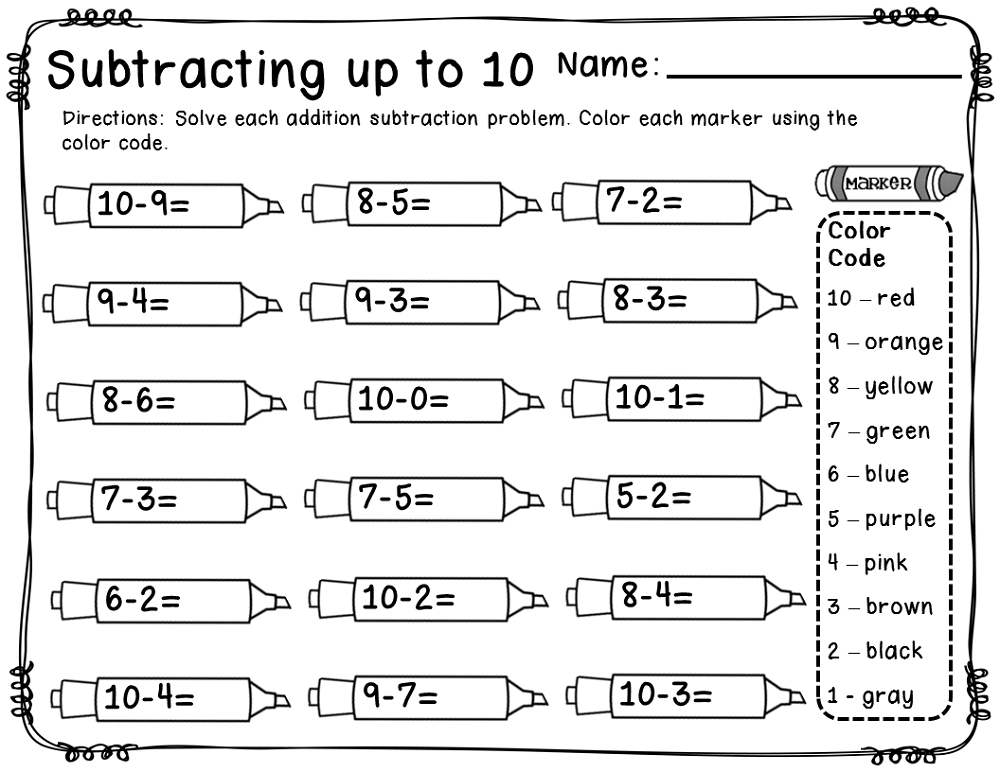 How many sweets were in the box from the very beginning?
How many sweets were in the box from the very beginning? - There are 20 postcards in Marina's collection. Yulia also has 20 postcards. How many postcards do girls have?
- Seva had 20 stamps, he was presented with 4 more stamps. How many stamps did Seva have in total? nine0044
Option 4
- Mom planted 20 cucumber bushes and 17 tomato bushes. How many plant bushes did mom plant in total? On Monday, 8 tables were brought to the canteen, on Tuesday - 7 tables, and on Thursday - 10 more. How many tables did the canteen receive in a week?
- Pasha and dad went camping. On the first day they walked 12 km. In the second - 10 km, in the third - 8, and in the fourth - 11. What path did dad and Pasha cover?
- The zoo has 12 monkeys, 8 tigers, 2 elephants, 6 bears and 4 raccoons. How many animals are in the zoo? nine0044
Important! If every day you solve one version of addition tasks with a child, then on the control tests he will show brilliant results.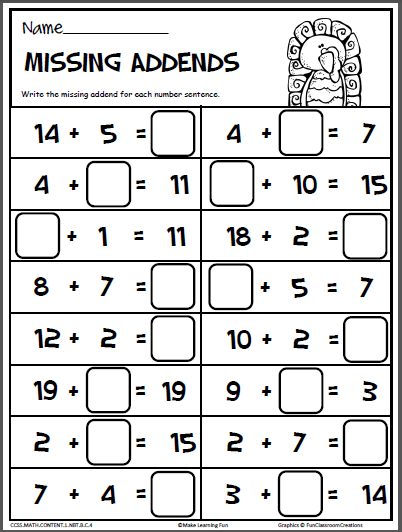
- There are 13 boys and 12 girls in Grade 1-A. There are 12 boys and 15 girls in grade 1-B, and 10 boys and 12 girls in grade 1-C. How many boys and how many girls are there in all first grades?
Subtraction tasks for first graders
Subtraction tasks also have their own characteristics and features. In the condition, you can always find some of the characteristic phrases: “how much is left”, “there were so many, of them ...”, “there were so many, so many left / flew away / ran away / deteriorated, etc.” and others. Here it is also important to understand what the first term, the second term and the sum are, to be able to find them in the task condition, because subtraction problems are the inverse of addition. And the concepts here are slightly different: reduced, subtracted, difference. nine0003
Below are subtraction problems for first graders. For convenience, we also divided them into options so that when doing homework, children can solve already completed tasks.
Here there are tasks both for finding the remainder (“how much is left”) and for decreasing (“by how much the number has changed”).
Option 1
- Andrei lives on the 7th floor, and Alena 3 floors below. What floor does Alena live on?
- Volodya has 17 cars, but Sasha has none. Volodya gave Sasha 8 cars. How much does he have left? nine0044
- Natasha is 12 years old, and her brother Seryozha is 7 years younger. How old is Seryozha?
- There were 10 apple trees in the garden, and 4 less pear trees. How many pears grew in the garden?
- On the first day Mila read 24 pages in the book, and on the second day she read 3 less. How many pages did Mila read on the second day?
Option 2
- Children receive books in the school library. Petya took 8 books, Alyosha took 2 books less than Petya, and Vanya took 3 books more than Alyosha. How many books did each boy take? How many books did they take together? nine0044
- There were 25 berries in a vase on the table.
 Marina ate 4 berries, Alice ate 6 berries, Mila ate 3 berries, and Katya finished the rest of the berries. How many berries did Marina and Alice eat? Mila and Katya How many berries did Katya eat?
Marina ate 4 berries, Alice ate 6 berries, Mila ate 3 berries, and Katya finished the rest of the berries. How many berries did Marina and Alice eat? Mila and Katya How many berries did Katya eat? - There were 10 plates on the table and 6 less in the sink. How many dishes were in the sink?
- Serezha is 15 years old, his sister Larisa is 4 years younger. And the youngest brother Boris is 7 years younger than Larisa. How old are Larisa and Boris?
- Mom planted 30 cucumber bushes, 17 bushes sprouted. How many cucumber bushes were lost in total? nine0044
Option 3
- The children went to the forest for mushrooms. Dima found 10 russula and 7 white mushrooms. Tanya found 3 less russula and 2 less white ones. How many and what kind of mushrooms did Tanya find?
- The first house has 12 entrances, the second house has 4 entrances less than the first one. And in the third house there are 6 entrances less than in the first. How many entrances are in each of the houses?
- There are 23 apples in the first basket, and 11 less apples in the second.
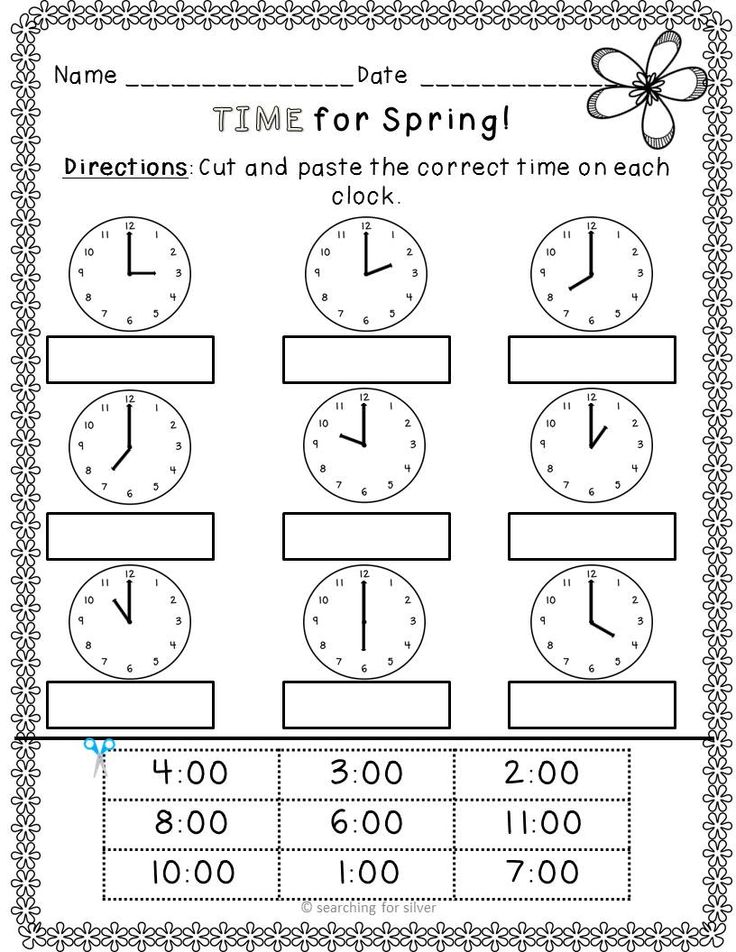 How many apples are in both baskets? nine0044
How many apples are in both baskets? nine0044 - 12 girls took part in the performance, and 3 less boys. How many boys were in the play?
- There are 15 roses in one vase and 8 less in another. How many roses are in the second vase?
Option 4
- Sweets cost 30 rubles, and bread is 15 rubles cheaper. How much does bread cost?
- Grandmother baked pies. With potatoes 30 pieces, with jam 10 less than with potatoes, and with cabbage 5 less than with potatoes. How many and what kind of pies did grandma bake? nine0044
- There were 20 men on the bus. There were 5 fewer women than men, and 7 fewer children than women. How many people were on the bus in total?
- Children receive books in the school library. Sasha took 5 books, Misha took 2 books less than Sasha, and Serezha took 2 books more than Misha. How many books did each boy take? How many books did they take together?
- 20 buckets of water were used to water the garden.
 12 buckets went to the beds with cabbage. How much went to the beds with carrots? nine0044
12 buckets went to the beds with cabbage. How much went to the beds with carrots? nine0044
Comparison tasks for first graders
- Comparison tasks are aimed at finding some number, less or more than the original. In principle, to some extent they can be attributed to addition or subtraction tasks, so we decided not to describe these tasks by options, but to give several similar examples:
- There were 10 cats on the roof: 7 black and 3 grey. How many more black cats than gray ones?
- In the village, my grandmother has chickens and ducks. There are 18 chickens and 15 ducks. How many more chickens than ducks. nine0044
- Tanya has 3 dolls, and Dina has 4 more. How many dolls does Dina have? How many dolls does Tanya have less?
- Marina is 14 and Misha is 9. How many years is Marina older than Misha?
- There are 8 cars in the garage. Of these, 3 trucks and 5 cars. How many fewer trucks than cars?
- Dima was presented with gifts for his birthday.
 First, mom and dad gave 2 gifts, then friends brought 5 gifts. How many more gifts did Dima have?
First, mom and dad gave 2 gifts, then friends brought 5 gifts. How many more gifts did Dima have? - On the first day of vacation, Yura solved 5 problems, on the second - 7, and on the third - 2. How many more problems did Yura solve on the second day? nine0044
- How many problems less than the first did Yura solve on the third day? And how many fewer problems did he solve on the third day than on the second?
- Sonya had 3 oranges and 10 apples. How many more apples than oranges?
- Olya has 3 hares and 2 squirrels. Mila has 5 dolls and 1 bear. Who has more toys and by how many?
- Cows were grazing in the meadow. 7 goats came to them and in total there were 15 animals in the meadow. How many cows were there?
Logic tasks for first graders
Articles with teachers' recommendations and lists of exercises and tasks have already been devoted to the development of logical thinking. Here we present several logical tasks that will allow not only to develop, but also to train the logic of first graders.
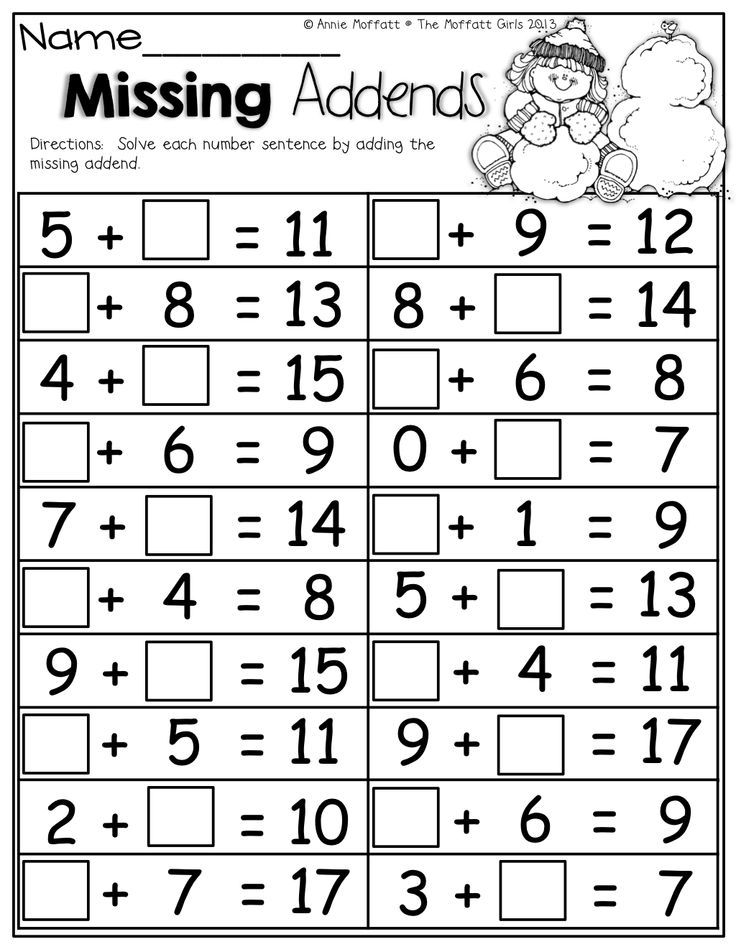
- Which is easier? A kilogram of cotton wool or a kilogram of nails? Tea, compote and cocoa were poured into a glass, mug and cup. There is no cocoa in the mug. There is no cocoa in the cup, and no compote. What was poured into what?
- How many fingers are on 3 hands? nine0044
- How many paws do 4 cats have?
- How many hands do 10 children have?
- Lena and Misha saw 2 ships in the sea. How many ships did each of the children see?
- Kitten tails sticking out from under the bed. How many kittens are there if 7 tails are visible?
- Dogs hid behind the fence. You can see 12 paws from under the fence, how many dogs are behind the fence?
- There are 5 peaches and 8 pears on the table. How many apples and plums will there be in total?
- There are 2 glasses of milk on the table. Petya drank the milk and put the camp on the table. How many glasses are on the table? nine0044
- Vanya left the school. 3 girls walked towards him.
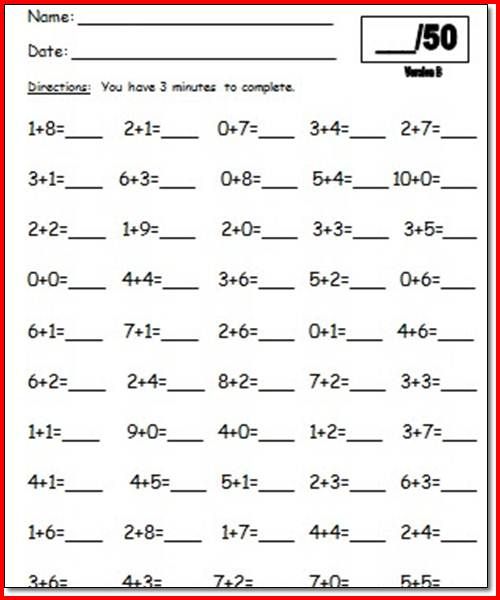 How many children left school?
How many children left school? - Seven first graders went from home to school: Petya, Masha, Liza, Grisha, Tolya, Misha and Larisa, and 4 second graders: Seryozha, Tanya, Mila and Vanya. How many girls went to school?
- To get into the theater 2 daughters and 2 mothers needed 3 tickets. How could this happen?
- Misha is 2 years older than Lena. How much older will he be than Len in 5 years?
- Lena and Milana planted 10 flowers each and finished the work at the same time. Milana started work earlier. Which of the girls worked slower? nine0044
Instead of a conclusion
Mathematical development of first-graders is of great importance in their education. By solving examples and problems, the child acquires new experience, knowledge and skills. Learns to think logically and mathematically, find solutions from various situations, more successfully master related sciences in further studies.
Children's progress should not be left to chance, and every effort should be made to help them in this difficult task, like studying in the first grade.